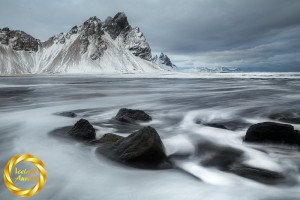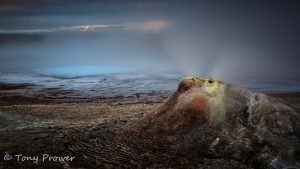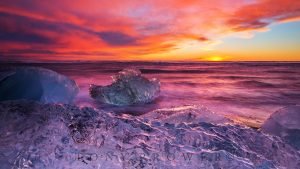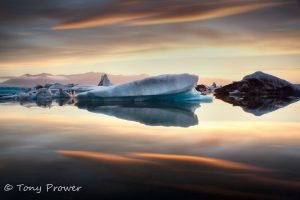There are times when a sea-scape requires a Deep DOF (Depth of field), but here we look at situations where you can get more from your lens by considering apertures such as f/6.3 for your scene.
Focus is one of the “big 3” considerations in photography. “DOF” is a key consideration in “Focus”. In general, landscape photographer will work with an aperture range of f/11 – f/16 in an attempt to include the whole scene within the DOF (everything is sharp-ish). On a photography trip to Iceland, it is best to get this right because conditions can change quickly.
Sometimes going to f/22 to give the sun a star burst can be desirable with a sea-scape, but the sharpness on the foreground may suffer with cheaper lenses. Having fantastic details in the foreground is the key to magical landscapes.

An f/9 aperture allowed tight focus on the foreground elements and also their sharpness is high quality, the clouds are acceptably sharp. Using f/22 would have given the sun a nice star-burst effect. The foreground elements would have been in focus, but with a poor quality sharpness (sharpening them would introduce noise). Given this shot again, I think I might attempt f/5.6 or f/4 to try to blur the sun a little.

This is f/6.3 and this is just enough to cover the beach ice with a 24mm prime. The sea and the sky don’t need to be in focus because this is a long exposure and they would be moving anyway.
Choose your DOF wisely…

Lóndrangar Summer by Tony Prower on 500px
This was f/13, which is quite a nice deep DOF as the landscape stretches into the distance. Critical parts are in focus. But as the nearest point is not so close, the same focus could have been comfortably achieved with f/11. This means that I could have traded a better iso setting for the same shutter speed.


















